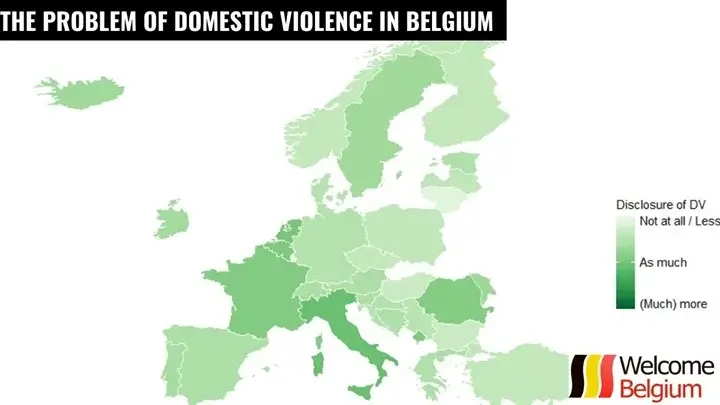Domestic violence remains one of the most pressing social problems in Belgium. According to statistics, every two months two women are killed by their ex-partners, which shows the scale of the tragedy. Despite the efforts of the authorities and public organizations, many victims face insufficient protection. In this article, we will look at the causes of this problem, its consequences and the measures taken to solve it.
The scale of the problem in Belgium
Domestic violence is a serious problem that affects not only Belgium but the entire world. Every year, thousands of women in Europe face violence, both physical and psychological, which leads to tragic consequences. In Belgium, the situation is particularly alarming: every two months, two women are killed by their ex-partners. This problem requires urgent solutions and a thorough analysis of the causes.
Domestic violence data:
- Annual Number of Cases: In 2024, there were over 20,000 domestic violence incidents reported.
- Women as the main risk group. More than 80% of victims are women, and a significant portion will suffer from former partners.
- Deaths of women: Every two months in Belgium, two women die as a result of attacks by their ex-partners.
- Regional statistics: Most cases are registered in the Brussels-Capital Region, as well as in larger cities such as Antwerp and Liege.
The distribution of domestic violence cases in Belgium shows that large cities and densely populated regions are more often the centres of this problem. For example, in 2024, a case in Antwerp, where a woman was killed in front of her children, caused a wide public outcry. Such tragedies highlight the need not only to combat violence, but also to strengthen preventive measures at the regional level.
Causes and factors that aggravate the situation
Domestic violence in Belgium has many causes, linked to social, economic and cultural aspects. It is often the result of inequality, control or psychological trauma in the family. Stereotypes about gender roles, lack of adequate support for victims and difficulty in leaving abusive relationships exacerbate the situation. In this part of the article, we will look at the main factors that contribute to this tragedy.
Reasons and factors:
- Economic dependence: Victims are often afraid to leave their abuser due to financial dependence, which makes them vulnerable.
- Cultural and gender stereotypes: In some societies, women are perceived as subordinate to men, which creates the basis for violence.
- Psychological trauma. Aggressors were often victims of abuse as children themselves, which creates a cycle of violence.
- Social isolation. Many victims find themselves isolated from loved ones, making it impossible for them to seek help.
- Lack of legal protection. Despite the laws, victims often face slow responses from the police and the judicial system.
- Alcohol and drugs. Substance abuse increases the likelihood of aggressive behavior.
- Stress and economic difficulties. Financial problems and stress in the family often become triggers for violence.
- Immigration status. Immigrant women who are dependent on their partners for documentation are particularly vulnerable.
Immigrant women in Belgium face high levels of domestic violence due to lack of support and language barriers. Social isolation, fear of deportation and lack of legal status further complicate their situation. Addressing this issue requires a specific approach: increasing access to assistance and developing integration programmes aimed at women in such circumstances.
Measures to prevent violence
To combat domestic violence, clear and effective laws are needed to protect victims and punish abusers. Belgium already has programs in place to expedite cases of violence, but it is important to strengthen enforcement to eliminate cases of impunity. An additional step would be to introduce stricter measures to prosecute abusers, even in the absence of official complaints from victims.
Crisis centres providing shelter and psychological support are a key tool in preventing violence. It is important to expand the network of such institutions and make them easier to access, especially for immigrant women, who often face barriers due to language and cultural differences. These centres should offer legal advice and employment assistance to ensure the independence of victims.
Violence prevention begins with educating respect for personal boundaries and equality. Broad educational campaigns aimed at combating gender stereotypes should cover schools, universities and workplaces. Public actions and projects, such as training for police and social workers, will help improve understanding and support for victims.
Effective prevention requires identifying potential cases of violence at an early stage. This requires developing systems of hotlines, anonymous calls, and social applications where people can safely report suspicious cases. It is important to train doctors, teachers, and other professionals to recognize the signs of violence and refer victims for help in a timely manner.
These measures require a comprehensive approach and cooperation between the state, NGOs and the public. Only through joint efforts can we reduce the scale of domestic violence in Belgium and create a safe environment for everyone.





